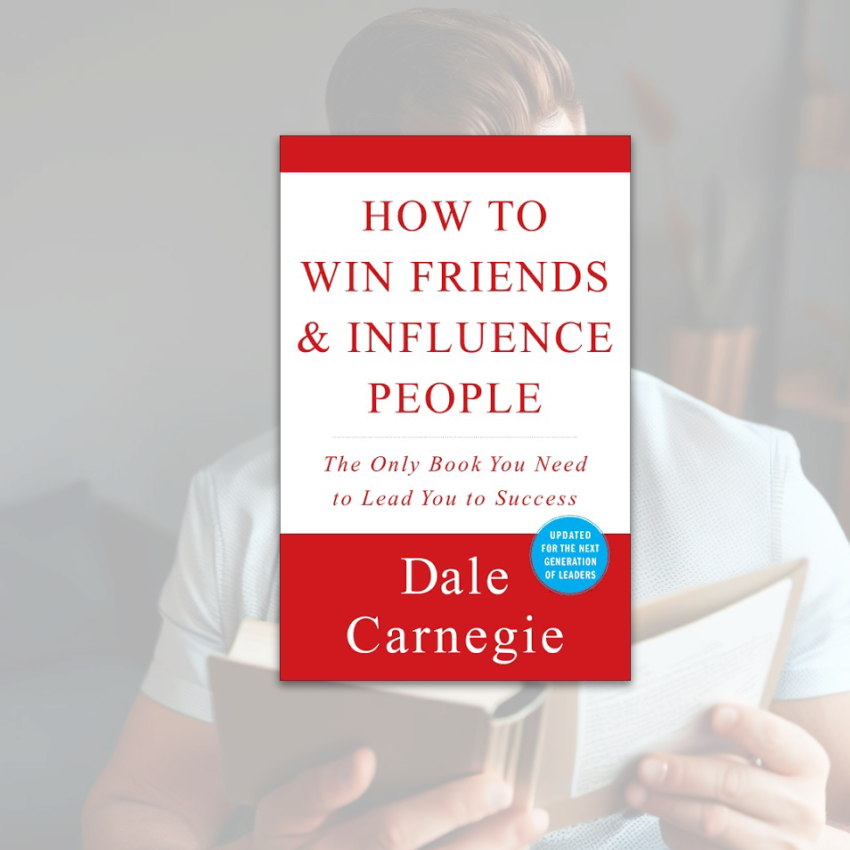For most of us, finding fault is the most natural and immediate response to the world around us. This is the result of something called “negative bias,” and it has a long history of serving to protect us. This fascinating concept seems to make so much sense when explained, so if you feel bad for having a slant toward the negative, understand it’s how we are programmed as humans. Assuming that the very large fluffy cat was probably a dangerous saber tooth tiger is how cavemen avoided being eaten. In the same way, asking why something might be bad has helped generations of people avoid cult leaders, get-rich-quick schemes, used car salesmen, and email phishing scams.
In How to Win Friends & Influence People, Dale Carnegie has had tremendous success in helping humans fight this and other evolutionary traits to develop positive, meaningful relationships. This is one of those books that gets made fun of almost as much as praise, but the results of applying the principles are undeniable. For that reason, it may make The Reading List a few times. Today, we will examine the first principle – “Don’t criticize, condemn, or complain.”
That’s hard to imagine, isn’t it? It becomes especially difficult to imagine when you are hired or asked to fix some problem that was either created or, at least, unsolved by your predecessor. Often there is a real temptation to highlight the things that need to be fixed because it will show the people who hired you how you plan to solve their problem. It can justify why they hired you and not someone else. It may also communicate your plans and explain why you are doing the things you are doing the way you are doing them.
It is very interesting that this is the first principle that Carnegie throws at us. Right off the bat, this generic prescription not to do the things that can express your displeasure feels a little dishonest. If he’s telling us that we can’t be honest about the problems, then there is probably a large number of readers who closed the book and moved on. Therein lies the filter. Everyone else who stuck with him can see the idea come full circle by the time he reaches Part Four.
The first thing Carnegie tells us in the final section of the book is, to begin with honest praise. Most of the time, I can tell you what is not perfect about my work, so anyone coming to me with criticism isn’t typically bringing news. Starting with praise is disarming, and it allows the criticism to eventually be received without the urge to defend against it.
He follows this advice with the encouragement to criticize indirectly. He tells a story about Charles Schwab seeing a group of workers in one of his factory smoking directly underneath a “No Smoking” sign. Mr. Schwab walked over, handed the workers some cigars, and suggested they smoke them outside. The “give-and-take” method of criticism is far more digestible than simply telling people what they are doing wrong. Carnegie also follows his last point with the advice to never use the word “but,” so we read that we should begin with praise, but never allow that praise to be watered down by the use of “but.” How many times have we heard the good news, and then we hear the “but” and our heart sinks?
Another method of breaking down the defense of those we hope will receive constructive criticism is to allow ourselves to relate to them by sharing stories of our own mistakes. Many years after this book a litany of other authors would come to write about the concept of psychological safety, and one key principle in creating psychological safety is to demonstrate your own vulnerability. Simply put, it feels much better to hear the advice of someone who has been where we are than to receive correction from someone looking down at us.
For the sake of brevity, we can combine the remaining portions of Part Four into two groups: private criticism and public recognition.
All criticism should be done in private. No one wants their mistakes on display in front of their peers, and if you expect to win a longtime connection with someone, showing them the respect and grace to treat them like a friend rather than a criminal is a great way to do it. Additionally, in those private conversations, it can be reassuring to talk about the ease with which the correction can be made. Sometimes, our mistakes feel huge, but even in those cases, the correction begins with a single step. Helping to strategize a solution, offering to bring in additional resources, and restoring the confidence of the person responsible for fixing the error will typically ensure not only the mistake is fixed but also the person learns a valuable lesson.
In contrast to private criticism, building a public reputation will also serve to boost your connection to those you direct. When we mess up, it’s rare that it doesn’t become the talk of the office or the breakroom. Especially among men, there is this idea that somewhat soft jabs about our inadequacies are fun, but if we are honest with ourselves, we aren’t laughing on the inside. However, when someone props us up and says something like, “Well, if anyone can do it, it would be him,” that goes a long way in endearing us to our supporters. Then, when they live up to that reputation, praising the progress and improvement is the next public step to follow. The caveat to this, of course, is that some people may prefer to avoid the spotlight, and that should be considered, as well.
All of this advice ultimately boils down to making the person that you are criticizing feel good about receiving the feedback and making the needed corrections. The bottom line is that we would all appreciate a support system more than a rebuke.
Typically in these Reading List posts, this is where I offer a list of books that expand on the idea that we have talked about. Today, I want to do something just a little bit different. This book was written so many years ago, and it is widely criticized for employing manipulative tactics and not encouraging transparency in our dealings. You can find a more modern way to use the advice in Part Four in The Storybrand Framework by Donald Miller. Yes, it’s a book on a marketing strategy, but How to Win Friends and Influence People is also essentially about achieving buy-in from those around us.
Somewhat at odds with the advice in Part Four of this book is Radical Candor by Kim Scott. She values transparency and growth through direct feedback, while How to Win Friends and Influence People emphasizes empathy, positive reinforcement, and maintaining harmonious relationships. Scott divides her advice into four categories, two of which, Radical Candor and Obnoxious Aggression, fit nicely with Carnegies recommendations. The other two quadrants, Ruinous Empathy and Manipulative Insincerity are somewhat at odds with the notions of being vulnerable and giving praise in abundance.
Probably the best approach is some combination of these, but the real key is demonstrating respect when dispersing criticism.

